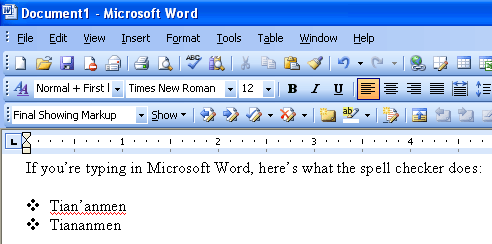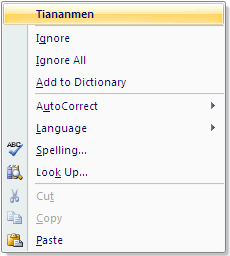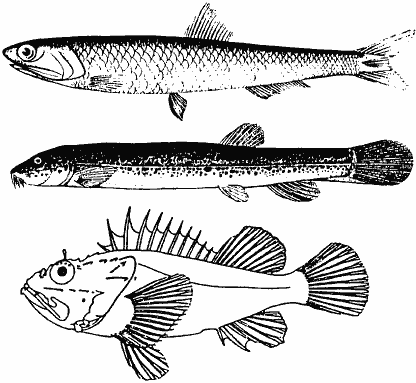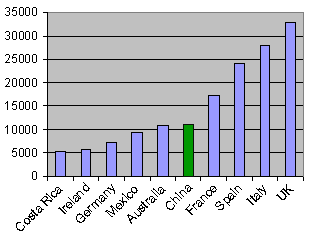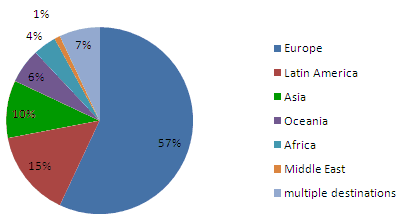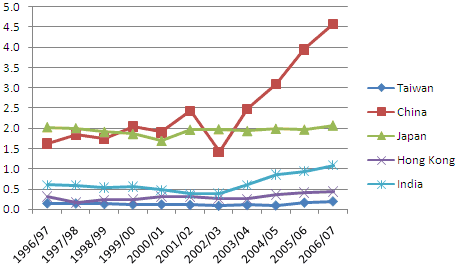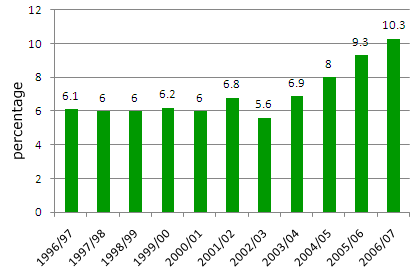In the push for Guangzhou to revamp its street signs, it appears the initial move for all general terms to be translated into English — e.g., lù as road — has been overturned. I’m pleased. Thus, Guangzhou’s street signs will be written differently than those in Beijing and many other cities in China.
Of course, I’d be more pleased if, say, 白云路 were rendered as Baahk-wahn Louh (or however that should be spelled in Cantonese) instead of or in addition to Báiyún Lù. Fat chance of that happening, though. And, anyway, the ratio for stories that please me vs. those that really piss me off is not nearly what I’d like it to be, so at least today I’ll take what I can get.
Some excerpts from stories on this topic:
No, it is not “street,” nor “road”. It is simply lu.
The English translation for signs in Guangzhou will be based on Mandarin pronunciation with pinyin spelling and come into effect from May 1, the city government said.
This means busy Beijing Road will be translated as Beijinglu and east Dongfeng Road will be known as Dongfeng Donglu. Lu means road or street in English.
I really hope that “Beijinglu” is just a typo. It should be Beijing Lu / Běijīng Lù.
From a Mandarin-language story:
Zài “gōnggòng biāozhì Yīngwén yì fǎguī fàn” zuìchū de cǎogǎo xiàng shèhuì zhēngqiú yìjiàn shí, jiāng “lù” hé “dàdào” fānyì chéng Yīngyǔ dāncí Road, Avenue. Zuórì gōngbù de “gōnggòng biāozhì Yīngwén yì fǎguī fàn” dìnggǎo zhōng, cóng “dàdào” dào “lù” dào “xiàng”, “lǐ”, “jiē” děng, yīlǜ zhíjiē yòng Hànyǔ Pīnyīn jìnxíng biāozhù. Dànshì xiāngyìng de, “qiáo”, “lìjiāoqiáo”, “gōnglù”, “suìdào” děng jiāotōng shèshī, “guīfàn” zé míngquè guīdìng shǐyòng yìyì, rú “Guǎngzhōu Dà Qiáo” yì wéi Guangzhou Bridge, “Guǎngshàn Gōnglù” yìchéng Guangshan Highway.
Note the translation (which, however, won’t be used) of dàdào as “avenue.” In Taiwan, this is rendered as “boulevard.”
OK, being pleased was nice while it lasted. Now, unfortunately, it’s time to go back to being pissed off. It takes real chutzpah to bring up a U.N. resolution that backs native languages in support of putting Mandarin on signs in a Cantonese-speaking region.
A resolution made by the UN in 1967 stipulated all the English translations of place names in each country and region should be based on its mother language. The State Council issued a plan to standardize place names in 1986, stipulating all public names should be based in pinyin.
Or, as a Mandarin-language article puts it in greater detail:
Zhōng yāoqiú duì shìzhèng dàolù de fānyì cǎiqǔ pīnyīn zhíyì de fāngshì, shì yǒu jù kěchá de. 1967 nián dì-èr jiè Liánhéguó dìmíng biāozhǔnhuà huìyì zuòchū juéyì, yāoqiú gèguó guójì jiāowǎng zhōng dōu shǐyòng Luómǎ (Lādīng) zìmǔ pīnxiě, měi ge dìmíng zhǐyǒu yī zhǒng Luómǎ zìmǔ de pīnxiě xíngshì, jí “dānyī Luómǎhuà”. Yīncǐ, “báiyún lù” jiùyào yì wéi Baiyun Lu, ér bù shì Baiyun Road, yīnwèi hòuzhě shì liǎng zhǒng bùtóng de Luómǎ zìmǔ pīnxiě xíngshì, bùfú “dānyī huà”. 1977 nián, dì-sān jiè Liánhéguó dìmíng biāozhǔnhuà huìyì shàng, tōngguòle Zhōngguó tíchū de cǎiyòng Hànyǔ Pīnyīn Fāng’àn zuòwéi Zhōngguó dìmíng Luómǎ zìmǔ pīnxiěfǎ de guójì biāozhǔn. 1986 nián Guówùyuàn bānbù “dìmíng guǎnlǐ tiáolì”, guīdìng Zhōngguó dìmíng de Luómǎ zìmǔ pīnxiě, yī “Hànyǔ Pīnyīn Fāng’àn” zuò tǒngyī guīfàn. Yīncǐ “báiyún lù” yě bùnéng yì wéi White Cloud Road, yīnwèi bù fúhé “Hànyǔ Pīnyīn Fāng’àn”. Suǒyǐ, shǐyòng Hànyǔ Pīnyīn zuòwéi Zhōngguó dìmíng pīnxiě guīfàn, bùjǐn wèi wǒmen fǎlǜ fǎguī suǒ guīdìng, yěděi dàoliǎo guójì shàng de rènkě.
Well, I suppose those could be separate instances of subversive irony; but my money is still on deeply offensive and clueless chutzpah. Or doublespeak. Take your pick.
sources:
related entries
